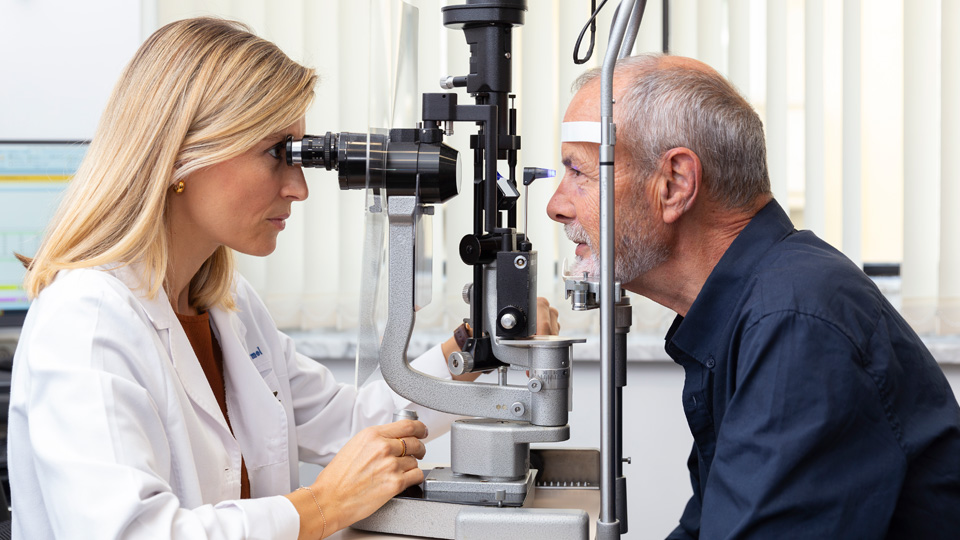What specialist should treat my dark circles?
27/11/2025

13/05/2025
Glaucoma is a chronic eye disease that progressively damages the optic nerve and can lead to irreversible vision loss if not detected and treated in time.
Although its main cause is usually elevated intraocular pressure (IOP), there are many other factors that influence its development. Understanding the risk factors for glaucoma is essential to determine whether you belong to the group with a higher likelihood of developing it.
Although anyone can develop glaucoma, some profiles are at significantly greater risk. The likelihood increases with age, particularly from the age of 40. Those with a direct family history of glaucoma are also at risk, as there is an important genetic component.
Other eye conditions such as high myopia or hyperopia, as well as systemic diseases like diabetes or high blood pressure, can predispose a person to develop this condition. Long-term use of corticosteroid medication, eye trauma and certain anatomical abnormalities of the eye have also been linked to an increased risk.
Glaucoma is mainly caused by an imbalance between the production and drainage of aqueous humour, the fluid that circulates inside the eye. If the aqueous humour does not drain properly, eye pressure increases and the fibres of the optic nerve are damaged. This damage is gradual, silent, and does not produce obvious symptoms until the disease is in an advanced stage.
Although glaucoma cannot be prevented in the strict sense, its impact can be minimised through early detection. For this reason, it is essential that people with risk factors undergo regular eye examinations, during which IOP, the optic nerve and the visual field are assessed.
Common tests include:
• Tonometry (measuring intraocular pressure)
• Visual field testing (perimetry)
• Optical coherence tomography (OCT)
• Fundus examination (retinal evaluation)
Early detection is crucial, as it allows treatment to begin that can slow the progression of glaucoma and preserve the patient’s functional vision for many years.
In its early stages, glaucoma presents no symptoms. This is why many people are unaware they have it until significant damage has already occurred. Some warning signs in advanced stages may include tunnel vision, difficulty seeing at night, halos around lights, or loss of peripheral vision.
If you are in doubt, or if you belong to a risk group, it is advisable to undergo a full eye examination. Only in this way can an early diagnosis be made and personalised treatment begun.
In conclusion, understanding the risk factors for glaucoma is key to taking timely action. If you're wondering how to know if you have glaucoma, the first step is a visit to the ophthalmologist. Regular monitoring is the best tool for protecting your vision.
Dr. Marta Mármol, ophthalmologist at the Barraquer Ophthalmology Centre
El glaucoma es conocido como la patología ocular silenciosa ya que hasta estadios avanzados no presenta síntomas, haciendo complicada su detección y, por lo tanto, retrasando la aplicación de un tratamiento efectivo. Según la Organización Mundial de la Salud en el mundo existen unos 60 millones de personas que padecen esta patología irreversible del nervio óptico, cifra que puede seguir aumentando en los próximos años según las previsiones. En el último capítulo de este año hablamos sobre esta patología con el doctor Francisco Ruiz Tolosa, coordinador del departamento de glaucoma del Centro de Oftalmología Barraquer.